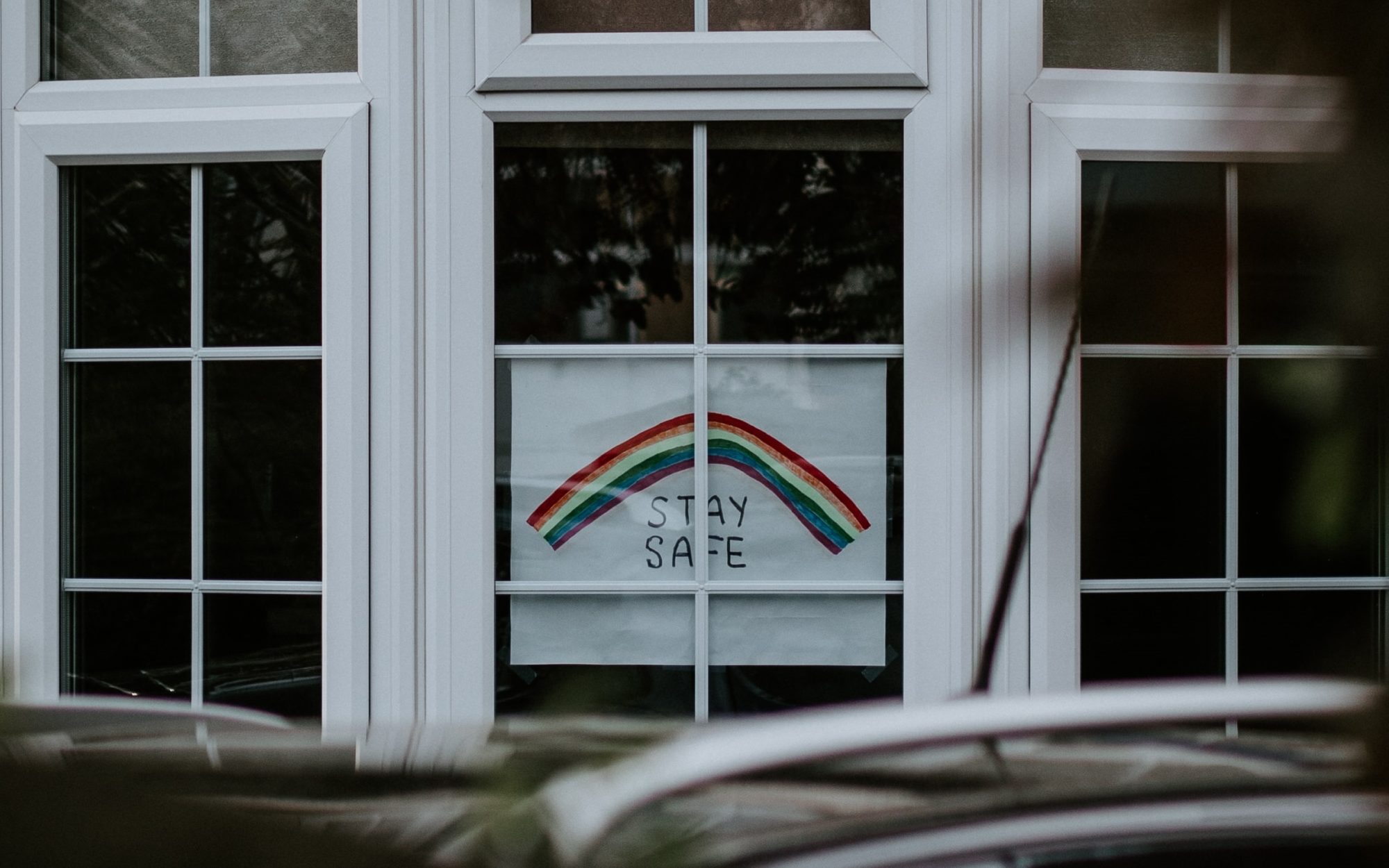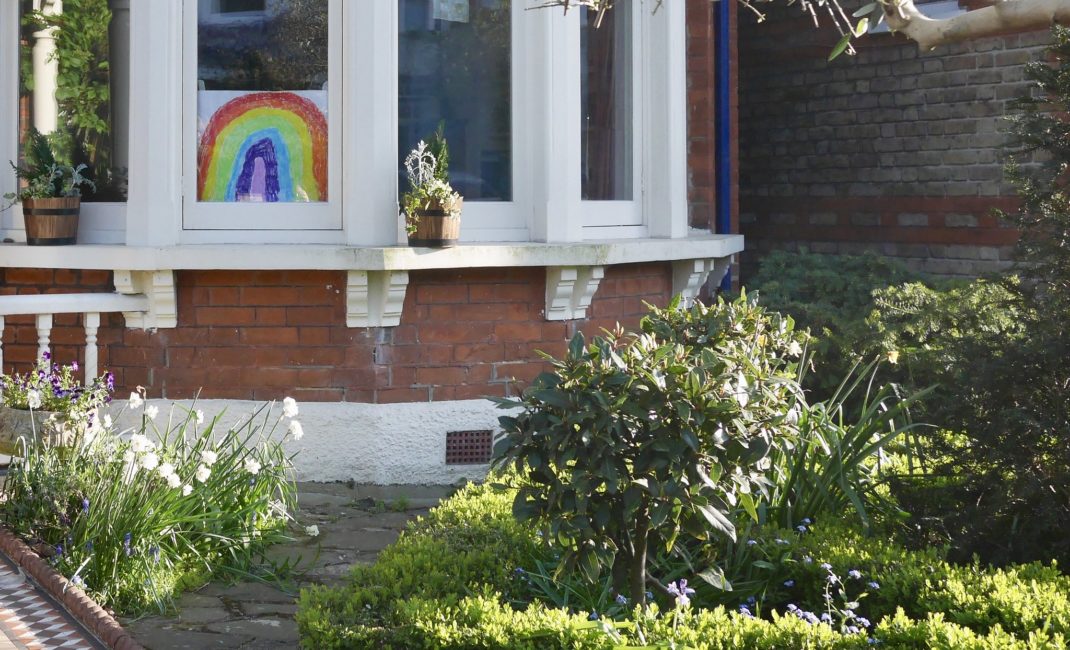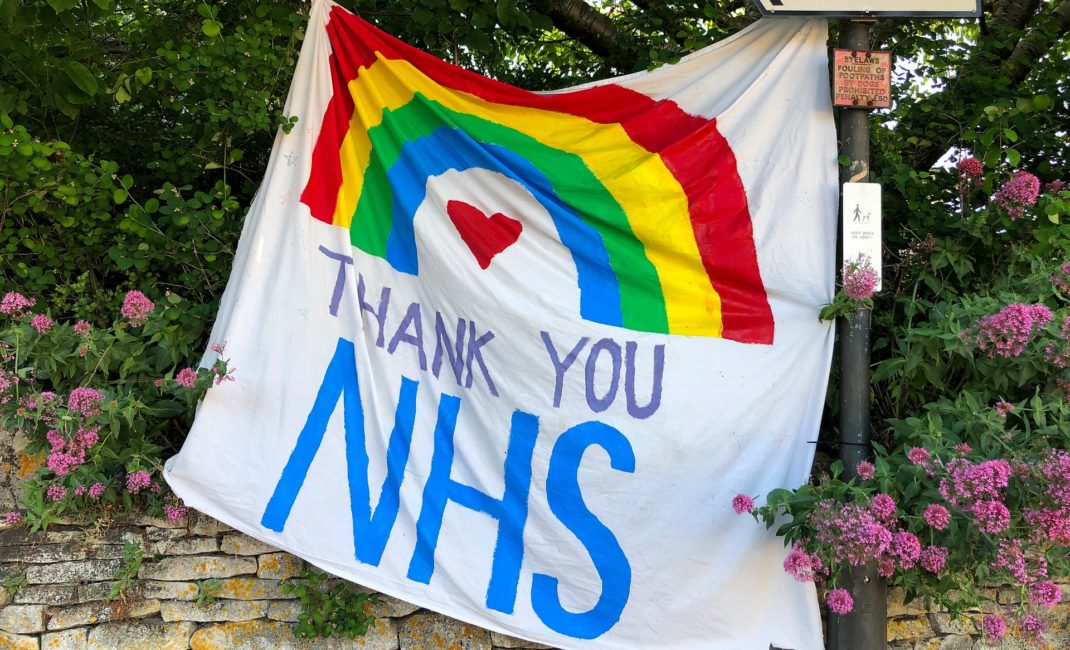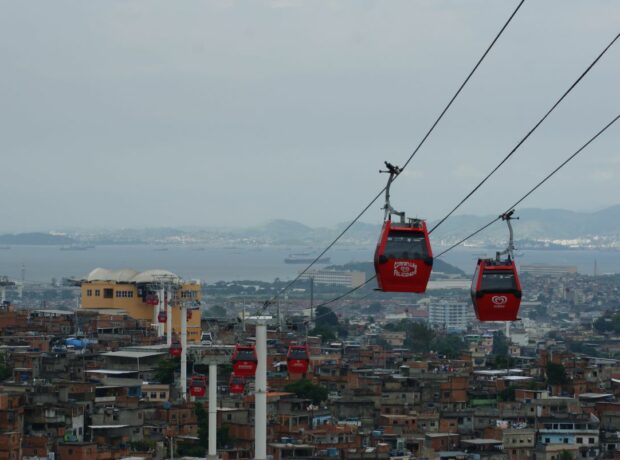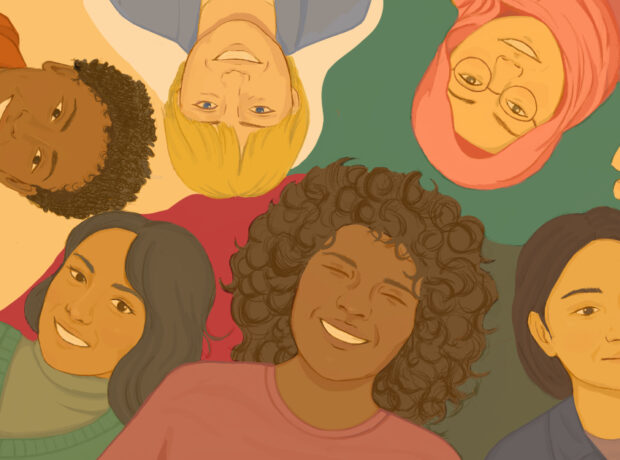How has the meaning of the iconic rainbows in the window changed over the course of the pandemic? Mum-of-two Amanda Kowalczyk recounts her experience of putting rainbows in the window with her young children and reflects on how she began to notice their potentially sinister undertones.
“Why not put a rainbow in your window? Children can no longer see their friends, attend school or go to playgrounds. So let’s put rainbows in our windows so they can spot as many as they can while they go for their daily walk. Like a giant treasure hunt.”
That’s how I first heard about putting a rainbow in the window. A social media post from the USA. We were all feeling that grey cloak of uncertainty that Covid restrictions had suddenly placed over normal life. Seeing a rainbow on a drab day is uplifting – mesmerising even.
If you’ve ever seen a rainbow through the windscreen of a car you might have experienced this. Your eyes are fixed on that continuous smear of dark tarmac ahead but then you glimpse this arc of colour and you want to look at it, feel it, see where it goes. It distracts from an otherwise long and monotonous journey.
So, we painted rainbows. Fat, smudgy handprints from the one-year-old. Carefully constructed – if a little wobbly – paintbrush strokes from the four-year-old. Red and yellow and pink and green. Proudly taped into the front window of our house.
Underneath, a neatly trimmed lawn and pots of spring flowers; tulips to be watered, bees buzzing around lavender. Orange and purple and blue. We might be restricted to life inside our house and garden, but what a lovely place that is.
We felt warmth as we strolled in the sunshine on our first rainbow treasure hunt, from the community spirit and the hope as surely as from the weather. Days passed. Weeks passed. The rainbows remained.
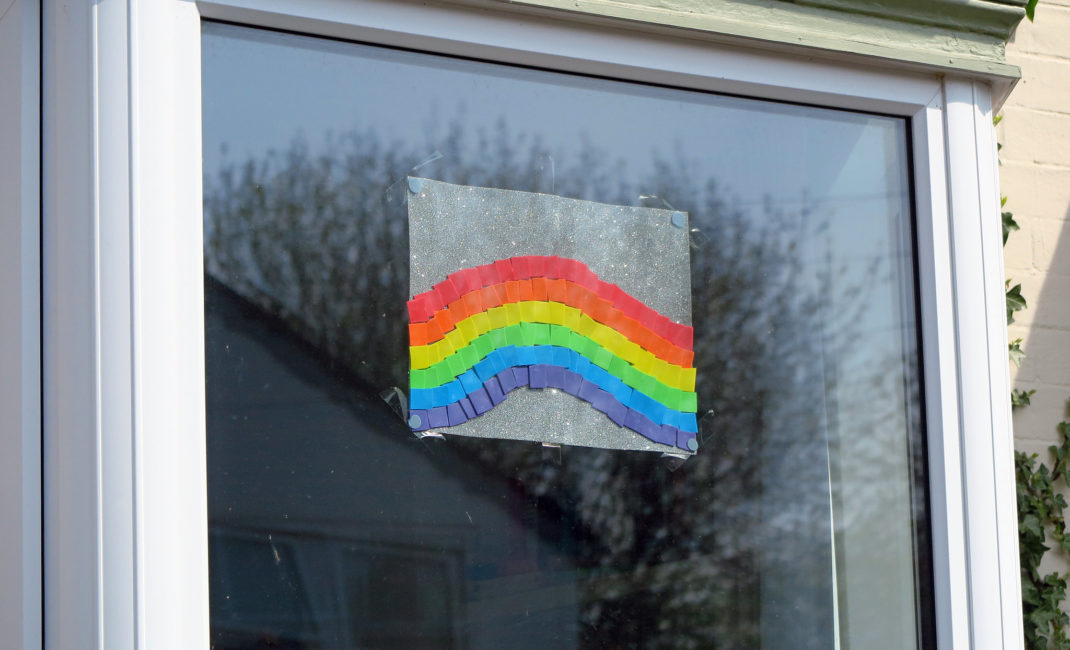
Photo by Tim Dennell
One day I glanced at a rainbow in a window and something shifted. Rather than experiencing the joyful sense of, “A child lives here who wants to do something nice for other children”, it seemed to whisper into my ear a more sinister message.
“A child lives in this house who you no longer see. You know there’s a child here because there’s a rainbow in the window. But you don’t know that the child is happy. What if the child can’t leave the house?”
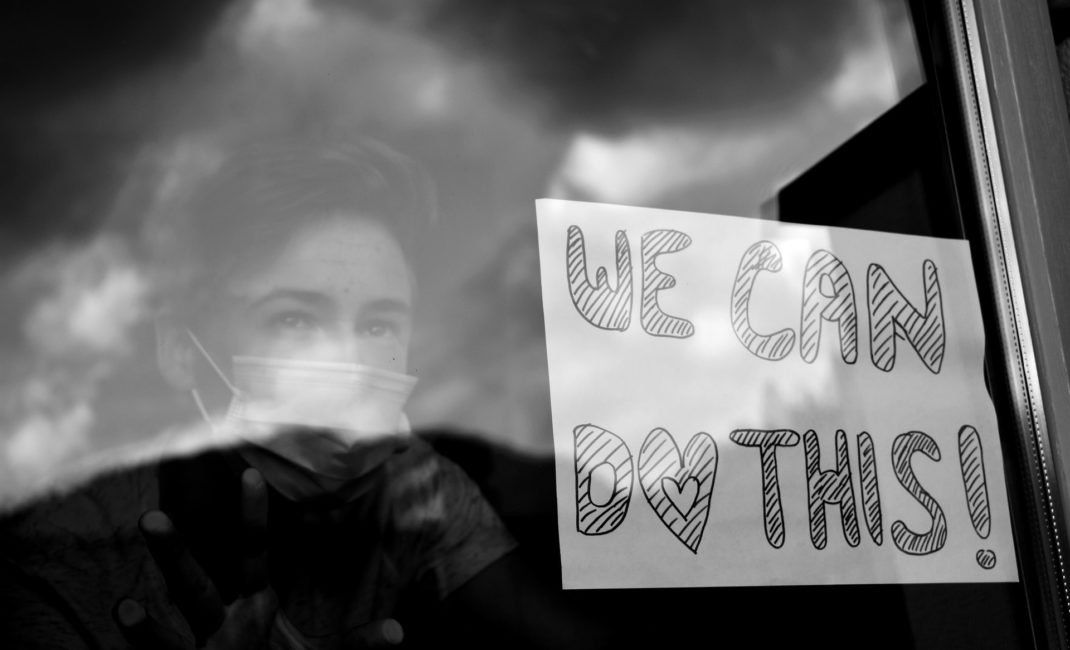
Photo by Elena Seeber on Unsplash
I thought of children with health conditions, contained for their own benefit. There was a girl in our street like this. I’d seen the family in their doorway, madly disinfecting every product delivered by the grocery store lorry before allowing it to enter their vicinity. The pharmacy van delivering her medication, also scoured with anti-bacterial wipes before access. I wondered whether she could see our rainbow from her house.
Days passed. Weeks passed. The rainbows remained. But the rainbows didn’t lift my spirits anymore.
My children’s enthusiasm was undeterred; they continued to look for and point out rainbows in windows. The innocence of youth; they only saw the picture in the frame. They didn’t see what surrounded it. The discarded bikes, the high-rise apartments with no outdoor space on a sweltering day, the desolate faces staring out as we walked past.
The rainbows were now screaming, “In this house lives a child who is trying to attract attention from someone who can help”. Rather than us seeking them out, I felt the rainbows were demanding our focus.

Photo by Dan Burton on Unsplash
Ragged paper, sticky tape peeling, colours fading in the bleach of the sun. The rainbows remained. We continued to walk each day but I encouraged my children to look for other things – flowers, teddy bears, anything.
I didn’t want to see rainbows anymore.
They reminded me of forgotten children, no longer receiving a formal education or free school meal. They reminded me of the inequality of living space and access to outdoor play. They reminded me of the deteriorating mental health in burnt-out parents and unstimulated children. They reminded me that promises of better times ahead weren’t materialising.
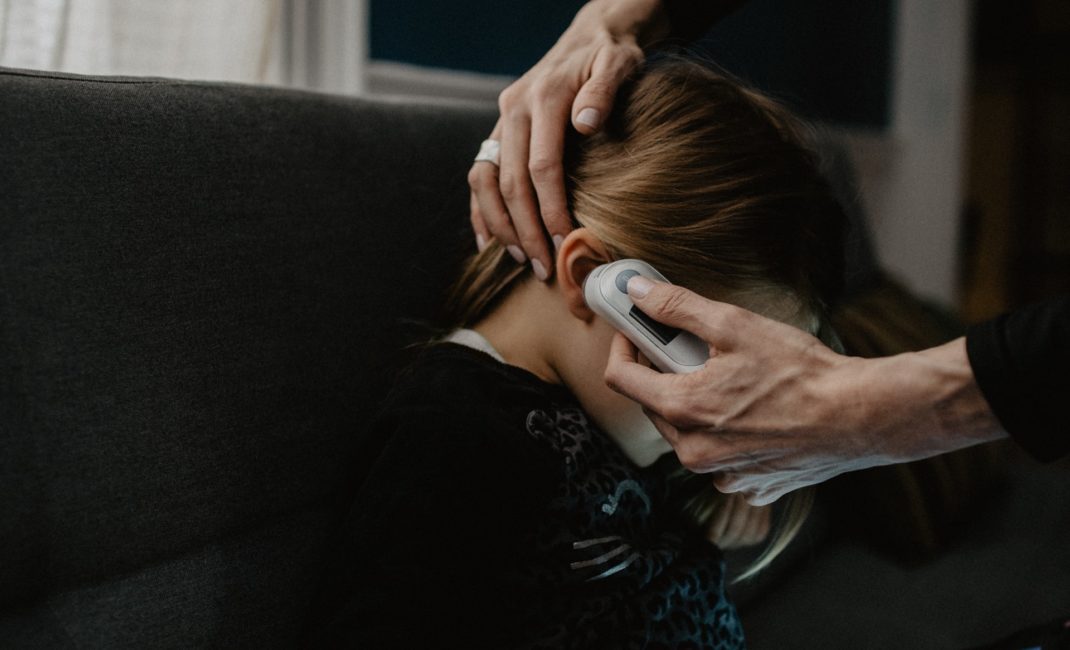
Photo by Kelly Sikkema on Unsplash
But still, the rainbows remained, and they multiplied. Now a representation of thanks for key workers, they began to appear in shop windows and chalk drawings on pavements. I’m sure they brought smiles to many.
But for me they were constant reminders of lost opportunities, lost progress and lost support. Children had not only had their education, sports and social lives taken away. Their rainbows had been taken also. Claimed to raise awareness for others instead.
The rainbows now shouted at me when I looked in their direction. For someone to listen to the needs of children. To stop and help, not just walk by and admire the colours disguising the grey realities behind. But I was powerless; there was no pot of gold at the end of those rainbows.
I took down the paintings from the window of our house. And I took my children for a different walk the next day. Not to look at rainbows, but to donate clothes and toys to a baby bank.
Read more:
